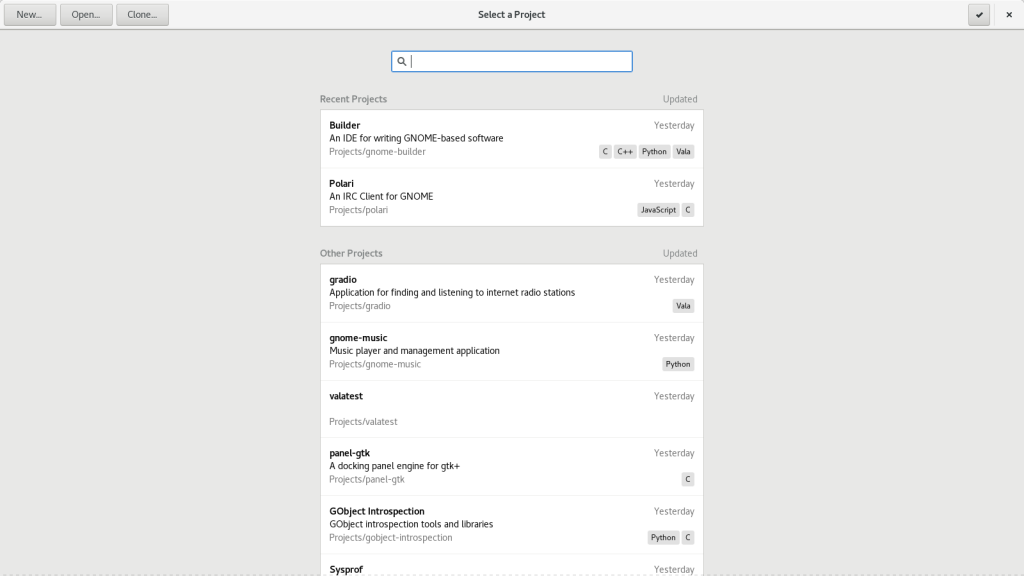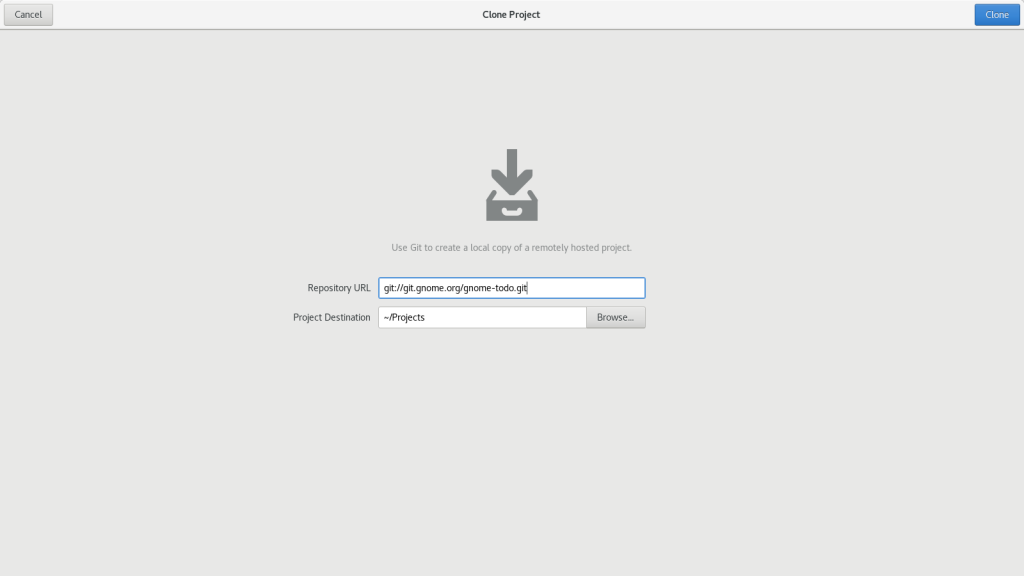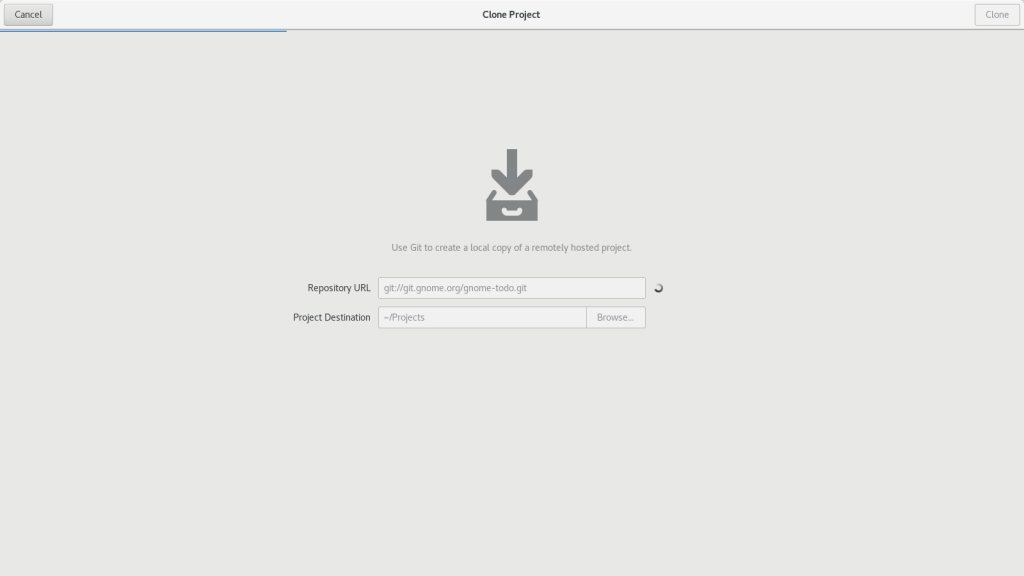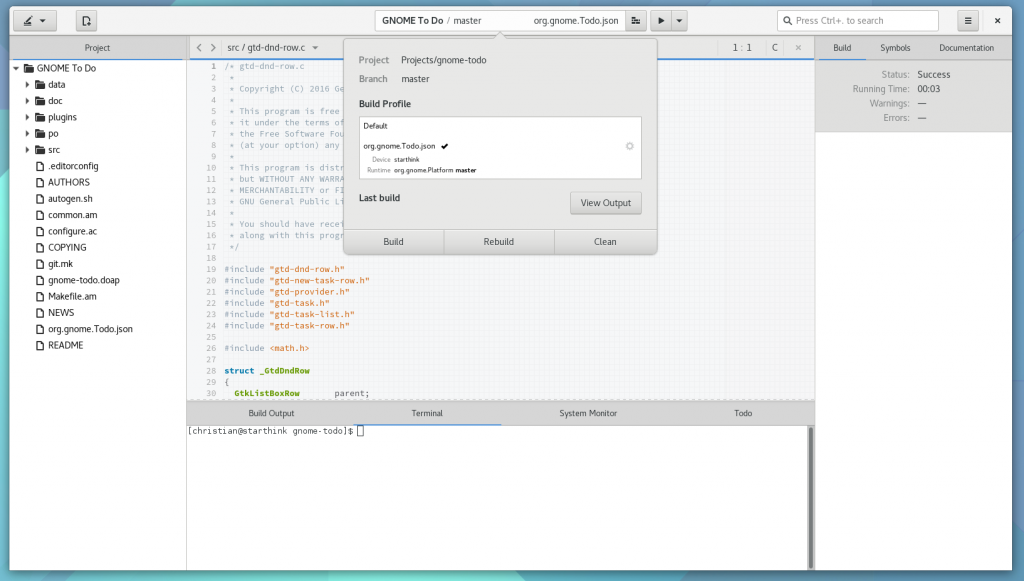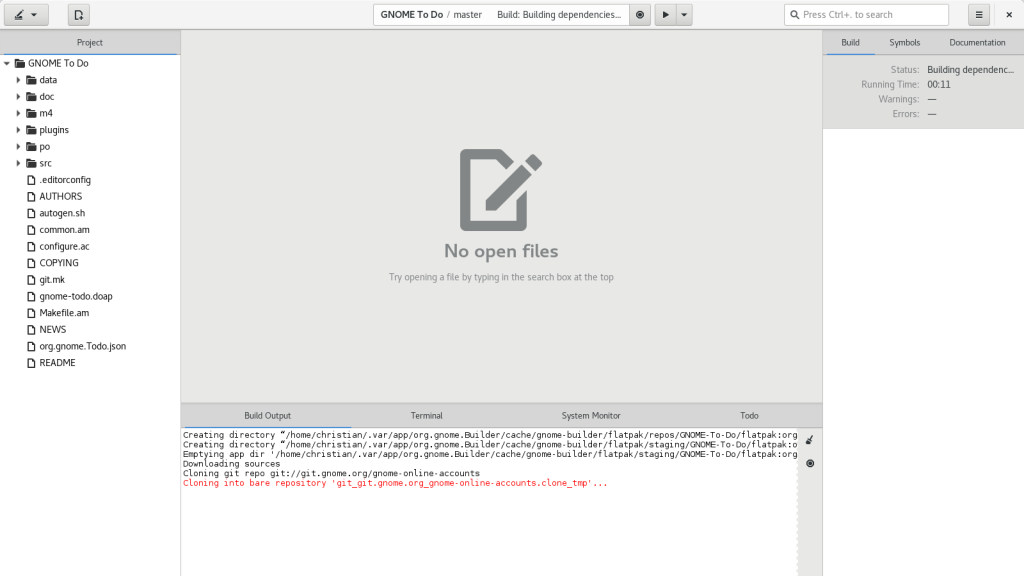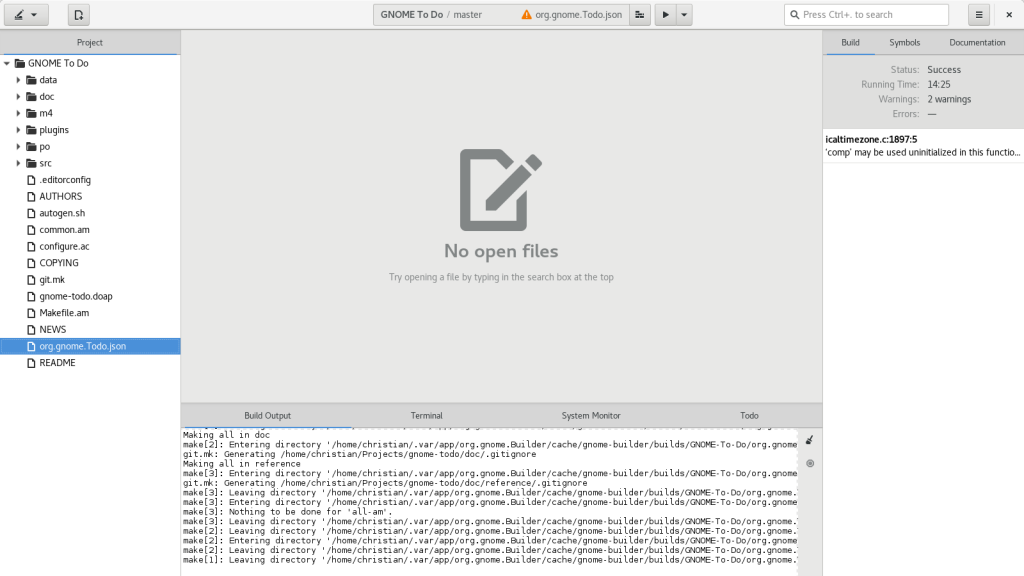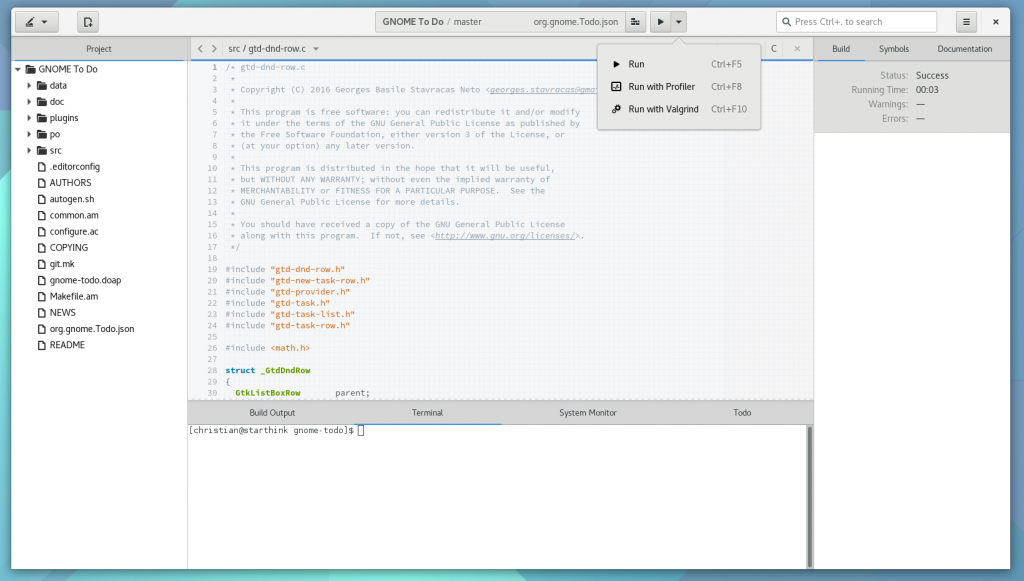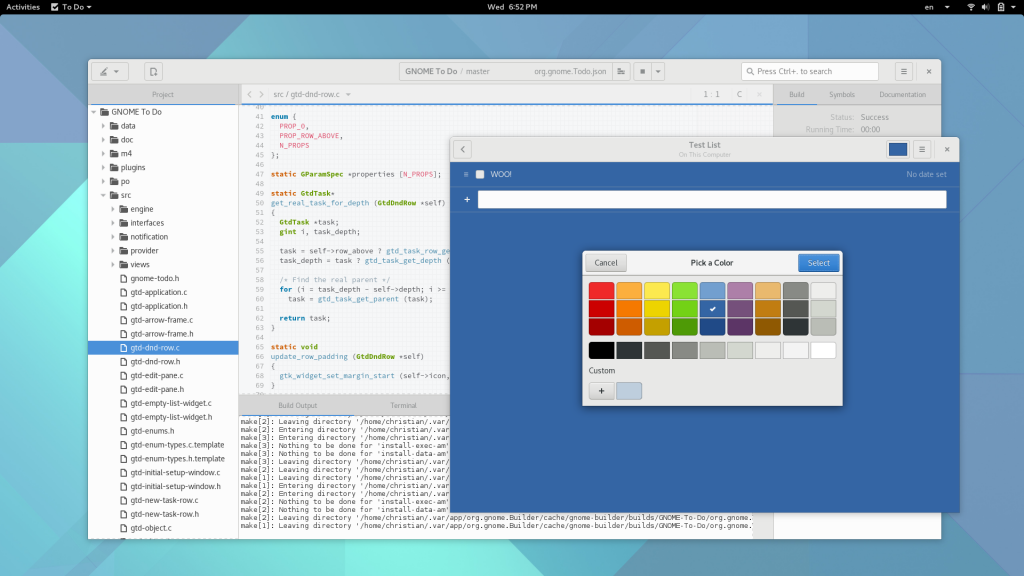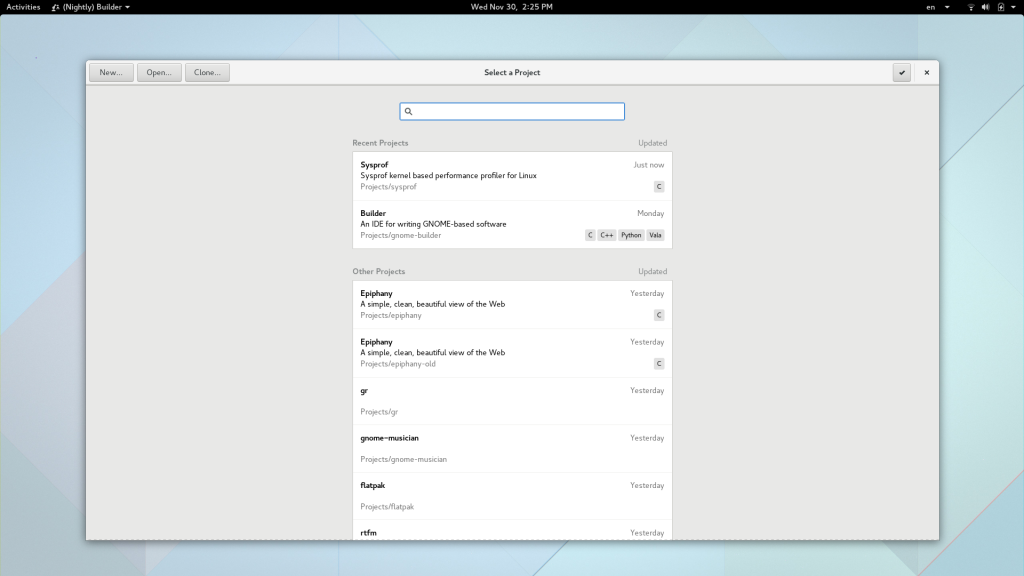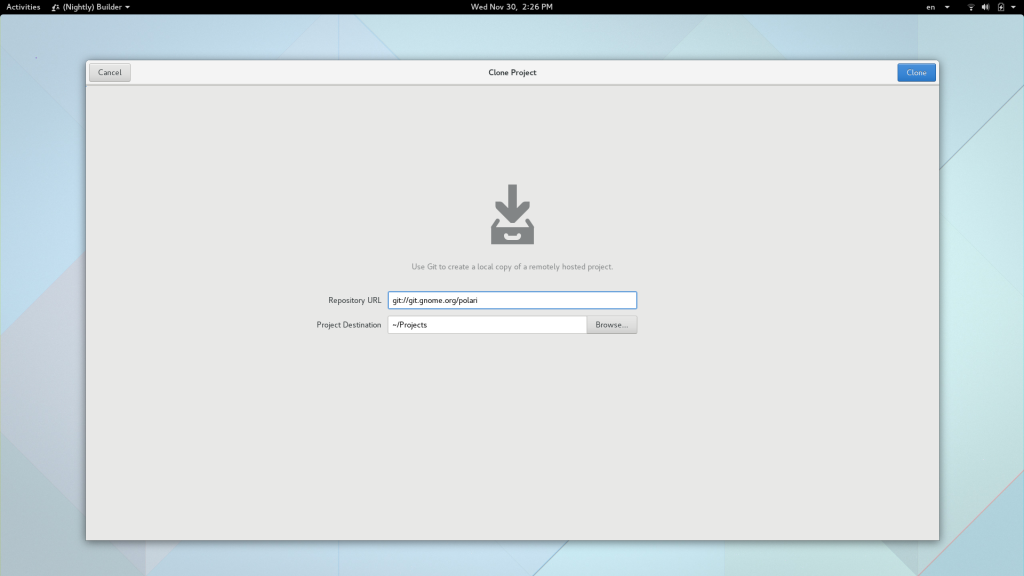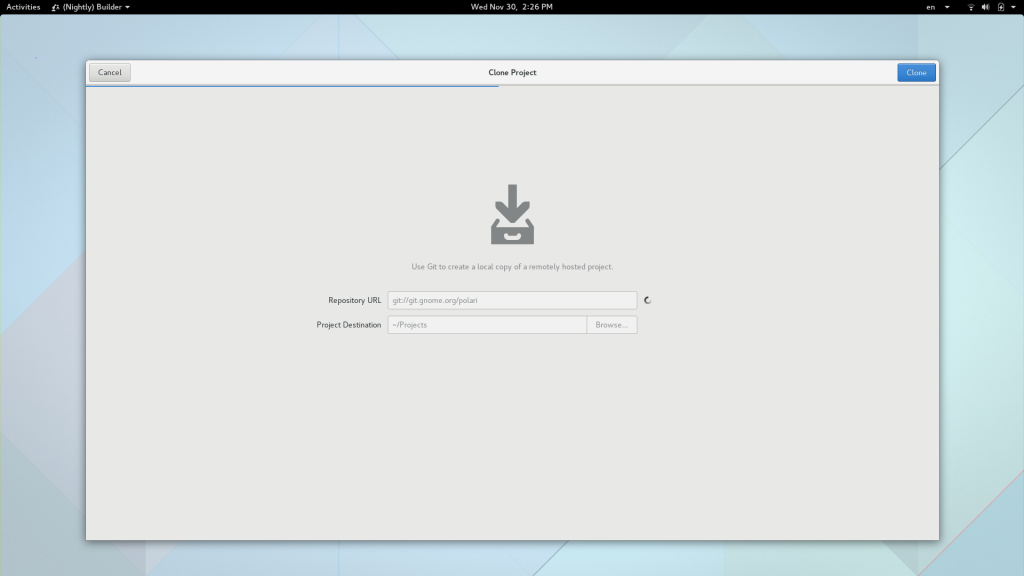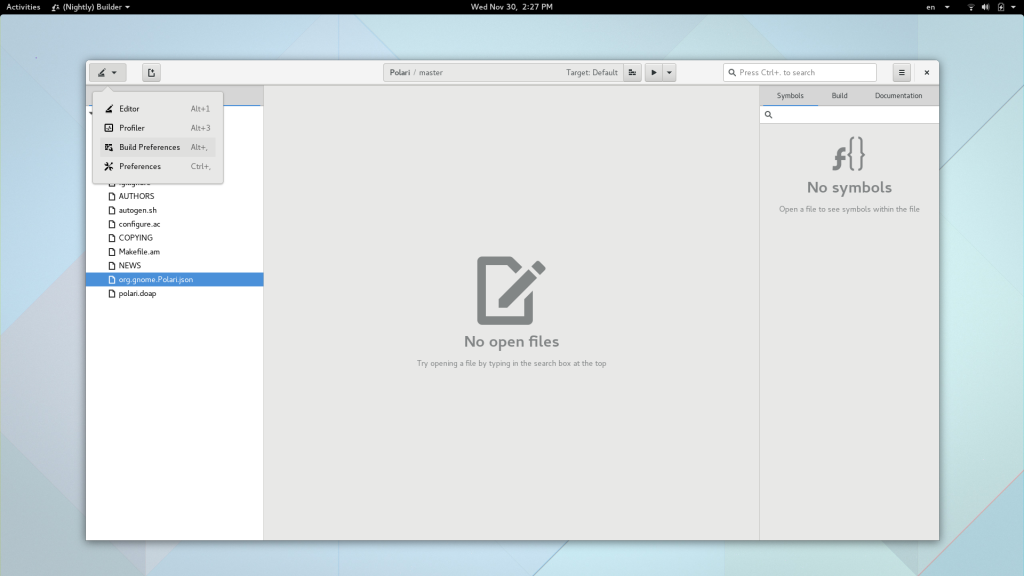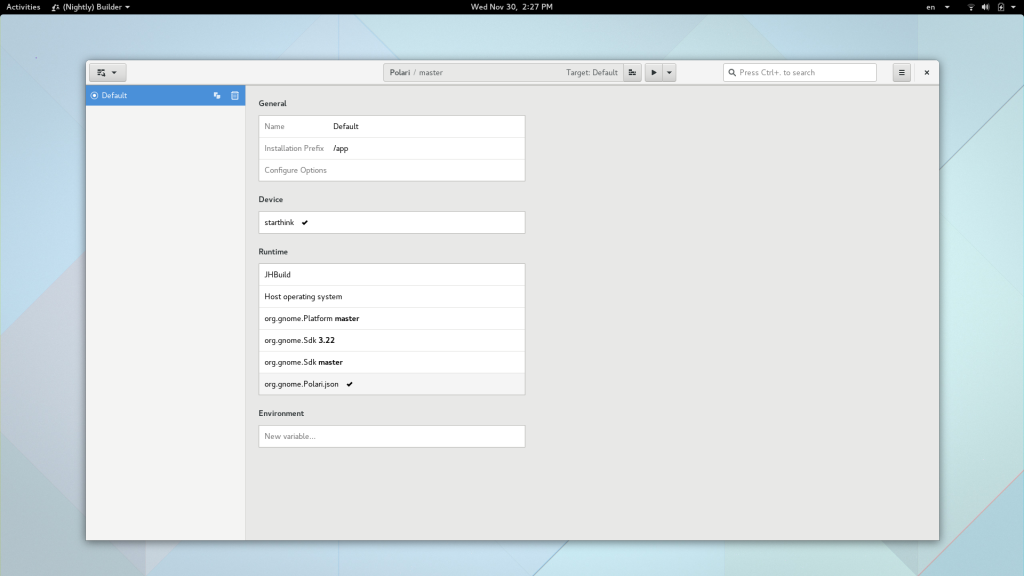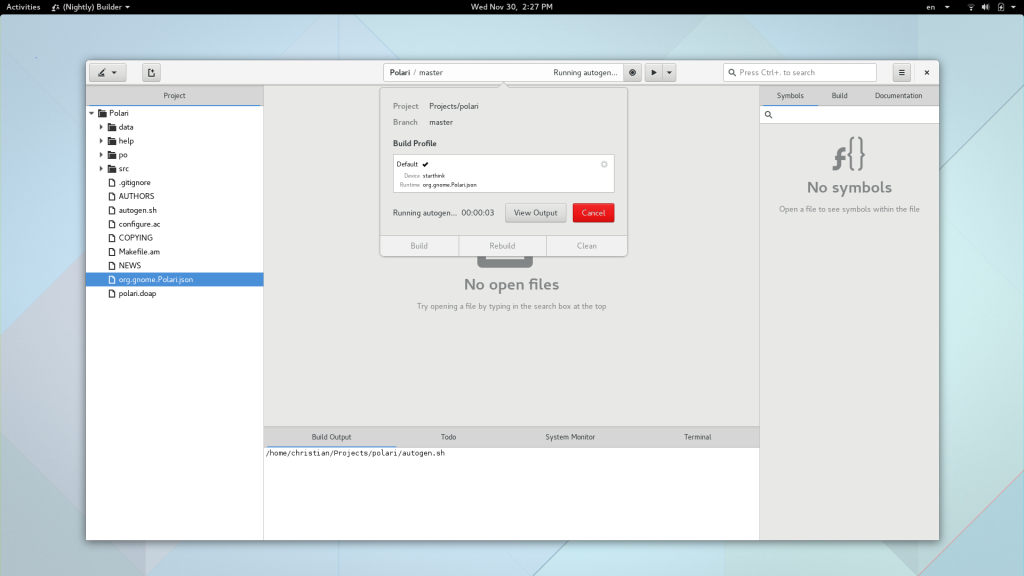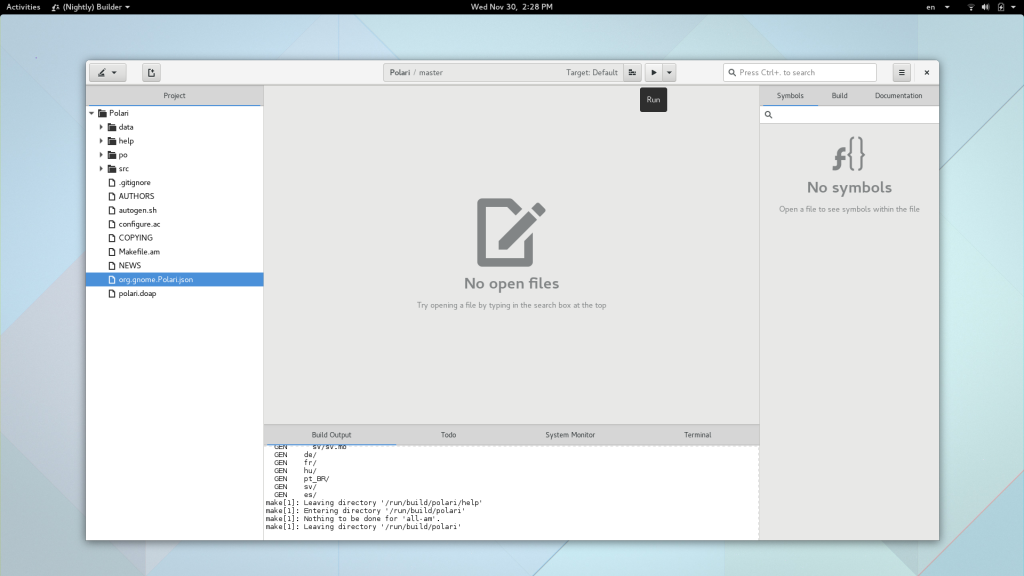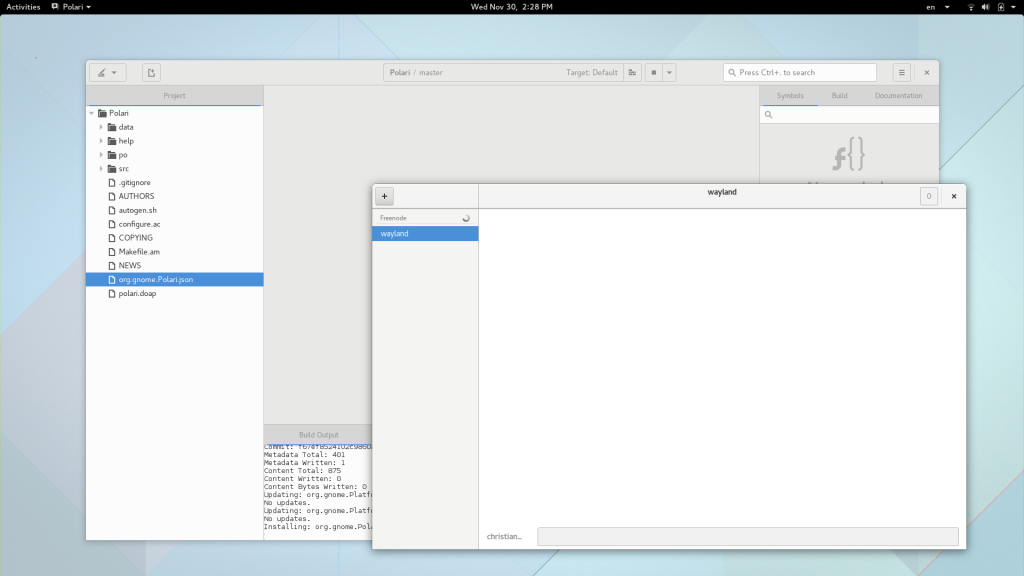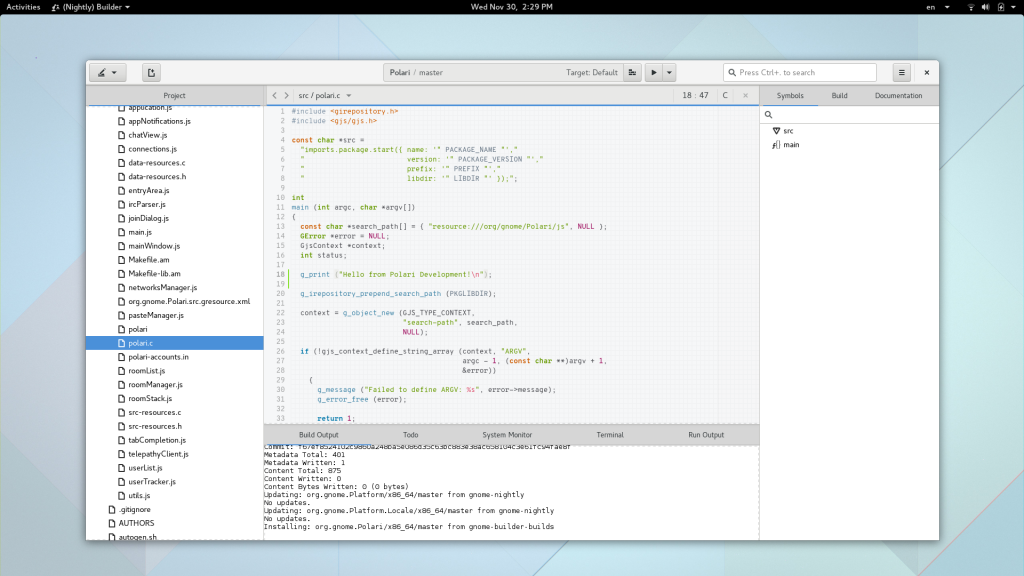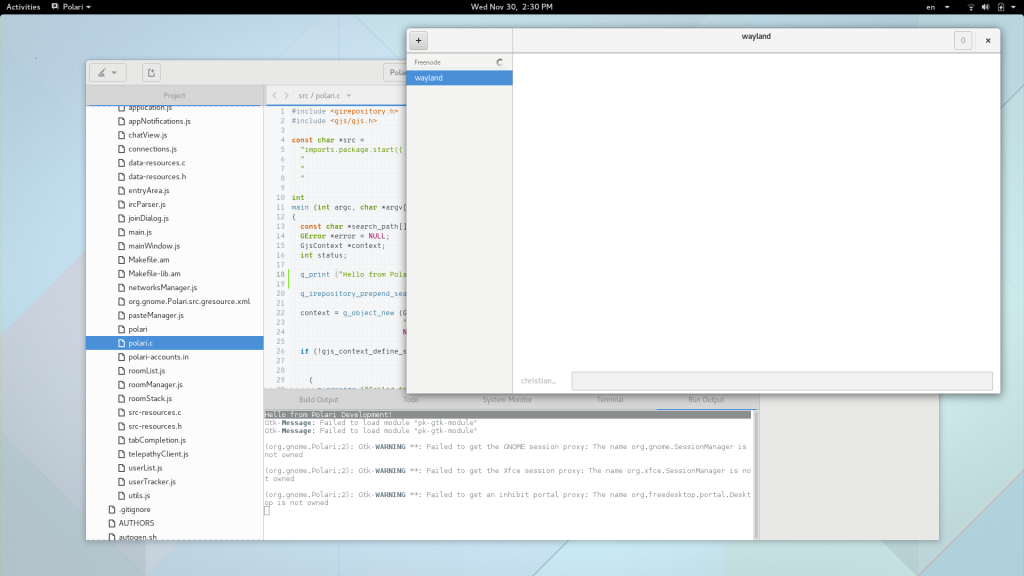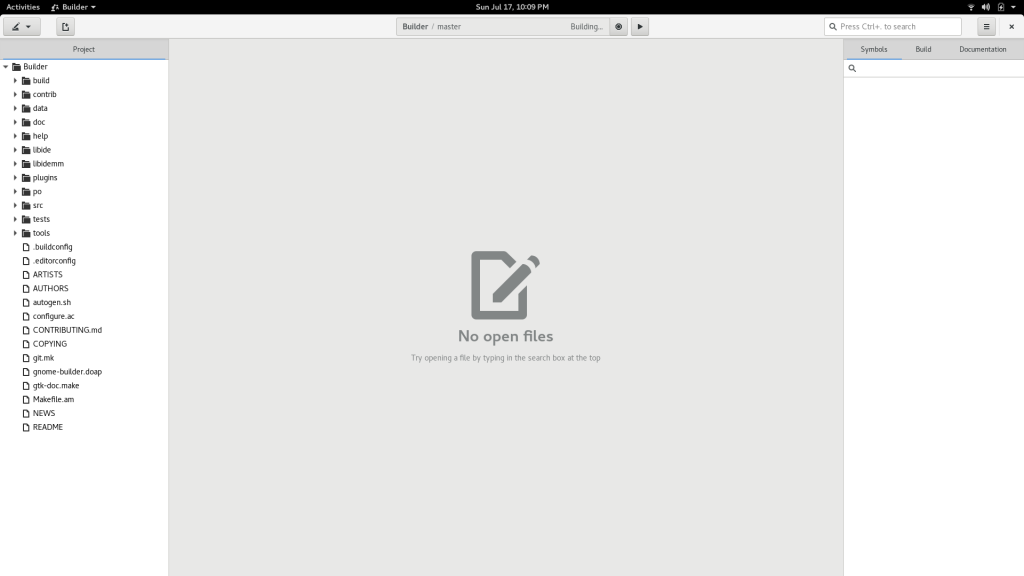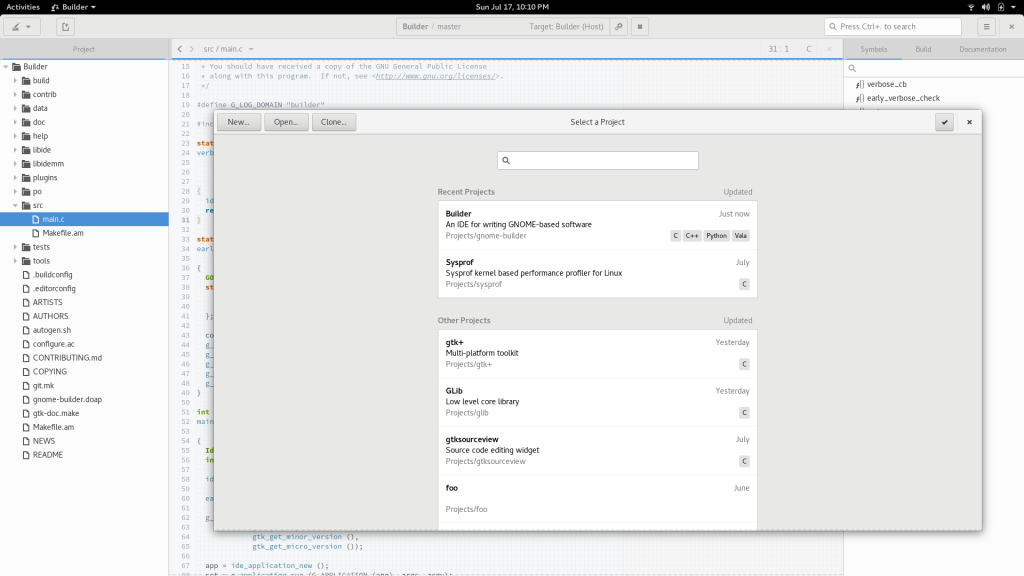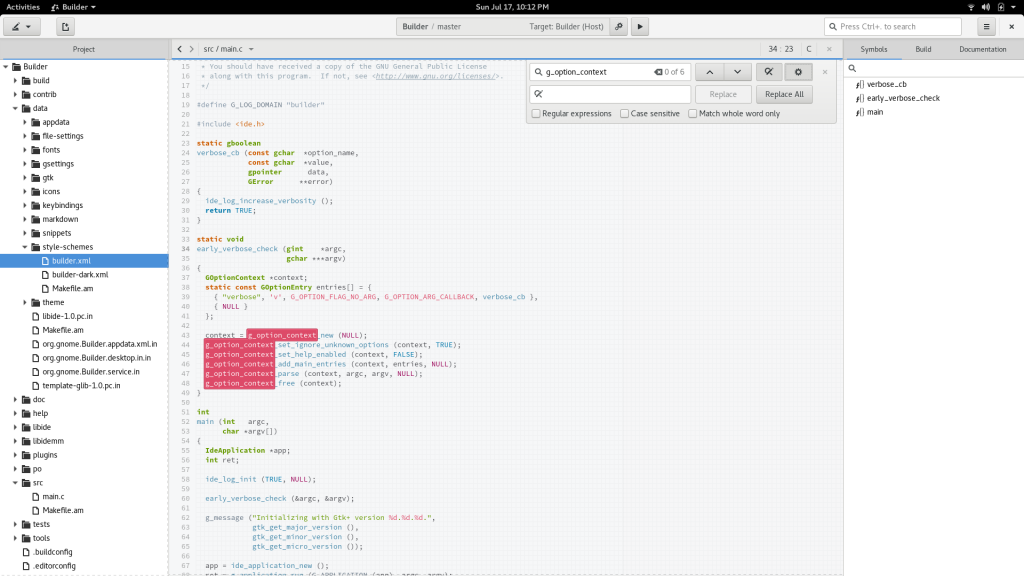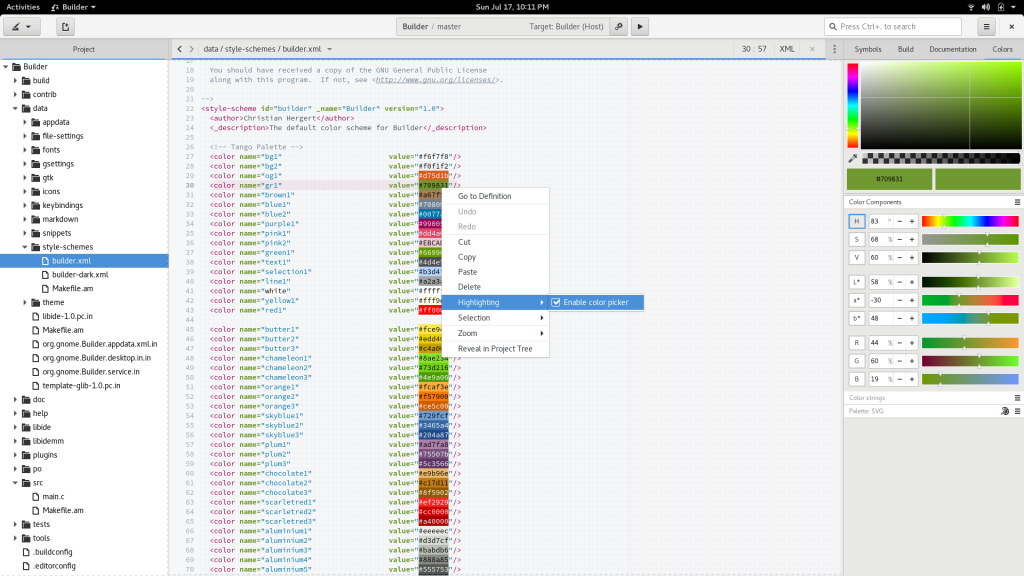First off, I’ll be in Portland at the first ever LAS giving demos and starting on Builder features for 3.24.
For a while now, you’ve been able to get Builder from the gnome-apps-nightly Flatpak repository. Until now, it had a few things that made it difficult to use. We care a whole lot about making our tooling available via Flatpak because it is going to allow us to get new code into users hands quicker, safer, and more stable.
So over the last couple of weeks I’ve dug in and really started polishing things up. A few patches in Flatpak, a few patches in Builder, and a few patches in Sysprof start getting us towards something refreshing.
Python Jedi should be working now. So you can autocomplete in Python (including GObject Introspection) to your hearts delight.
Jhbuild from within the Flatpak works quite well now. So if you have a jhbuild environment on your host, you can use the Flatpak nightly and still target your jhbuild setup.
One of the tricks to being a module maintainer is getting other people to do your work. Thankfully the magnificent Patrick Griffis came to the rescue and got polkit building inside of Flatpak. Combined with some additional Sysprof patches, we have a profiler that can run from Flatpak.
Another pain point was that the terminal was inside of a pid/mount/network namespace different than that of the host. This meant that /usr/lib was actually from the Flatpak runtime, not your system /usr/lib. This has been fixed using one of the new developer features in Flatpak.
Flatpak now supports executing programs on the host (a sandbox breakout) for applications that are marked as developer tools. For those of you building your own Flatpaks, this requires --allow=devel when running the flatpak build-finish command. Of course, one could expect UI/UX flows to make this known to the user so that it doesn’t get abused for nefarious purposes.
Now that we have access to execute a command on the host using the HostCommand method of the org.freedesktop.Flatpak.Development interface, we can piggy back to execute our shell.
The typical pty dance, performed in our program.
/* error handling excluded */
int master_fd = vte_pty_get_fd (pty);
grantpt (master_fd);
unlockpt (master_fd);
char *name = ptsname (master_fd);
int pty_fd = open (name, O_RDWR, 0);
Then when executing the HostCommand method we simply pass pty_fd as a mapping to stdin (0), stdout (1), and stderr (2).
On the Flatpak side, it will check if any of these file-descriptors are a tty (with the convenient isatty() function. If so, it performs the necessary ioctl() to make our spawned process the controller of the pty. Lovely!
So now we have a terminal, whose process is running on the host, using a pty from inside our Flatpak.
